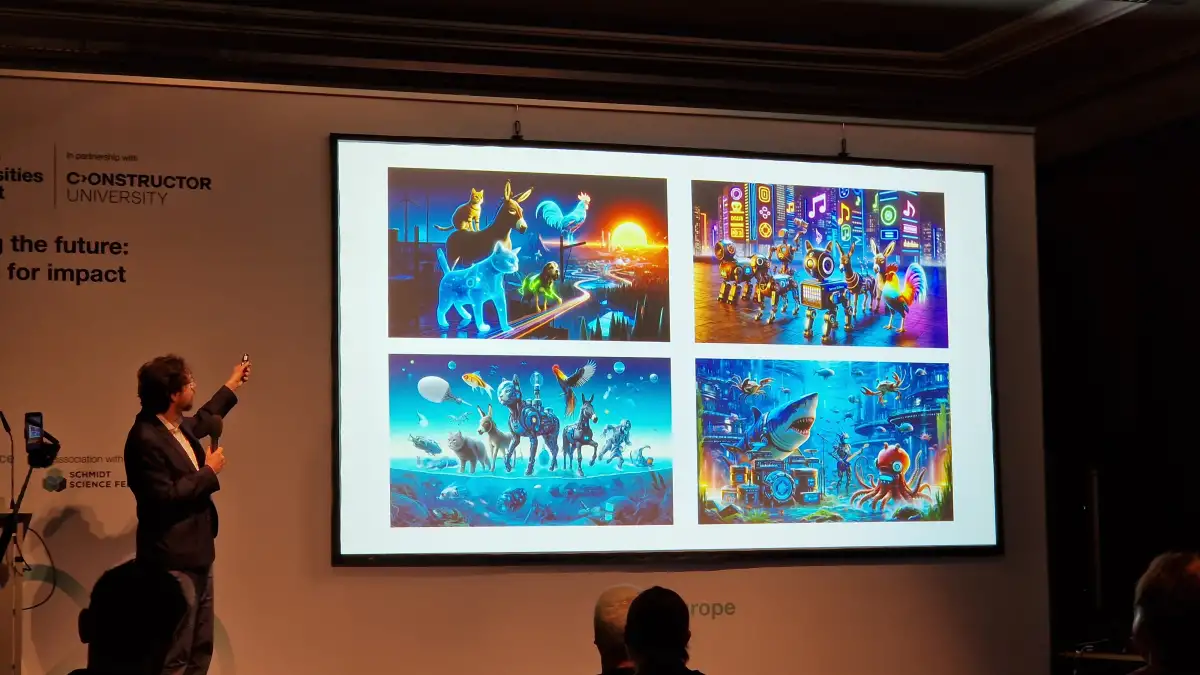As a technical and scientific campus, Constructor University often attracts interest through creative projects that allow students to develop artistically in their spare time. Whether it's the 'ArtOn!' festival, where art lovers compete against each other to ensure their homes win, or the Art Festival, where students present 130 artworks under one roof. Art and technology are never far apart at Gruen. But this time, the coexistence of opposites reached a higher and more formal level.
As part of “CultTech Camp 2024”, twenty well-known artists and scientists from around the world gathered on campus last week to work with teachers and students from Bremen on needed research in the fields of technology, culture and teaching. To be future-oriented and goal-oriented in all areas. Interdisciplinary projects are developed together to show how art and technology can benefit from each other. The aim of Constructor University was to find ways to improve the range of courses so that students could be provided with more opportunities to broaden their horizons in the future.
Six projects in the final presentation
Nobel laureate in physics, violinist, professor of robotics, drama, art historian, music producer and more – the ambitious goal was achieved together in five days. The beginning – or day zero – of the camp was last Wednesday. Lectures and workshops should help participants be inspired and informed. Different interests, knowledge levels and backgrounds were not a barrier at CultTech Camp, but rather a guideline.
The grand closing session of this multidisciplinary event took place on Sunday morning: six projects were presented after they had been developed during the camp days. In the end, each participant and guest was allowed to vote for their favorites and invest crazy money in the most inspiring and engaging project. For Constructor University, the winning project aims to be a topic for expanding its curriculum. Students should benefit from the results of the project.
Ambitious ideas were presented as part of the final round: the team concluded that merging art and science could aim to bring theater stages to life with artificial rainbows, clouds and lightning. Others took the story of the Bremen musicians as an example to improve research and solve known difficulties. Another group compared composer Johann Sebastian Bach with physicist David Bohm. Both men are known geniuses in their fields, but where Bach lacked facts, Bohm lacked emotions, and thus the concept of genius can also be questioned. The bottom line was clear: both disciplines could learn from and enrich each other; Start there and gain new perspectives as you each truly reach your limits. The Bach & Bohm project was the winner.
Elena Novoselova is a member of the Supervisory Board of the Constructor University and the Camp Initiative. It is extensively involved in research strategy development and collaboration with other research institutes. The camp was a complete success for them. Five days were allocated to building a bridge for dialogue between disciplines. “In the long term, the goal is to connect the two worlds and expand each other’s horizons,” she says. “We learned on a basic level that career and technical students can work together.”
The camp in Grün was organized in cooperation with the “CultTech Association” from Vienna. Founded in 2021, the organization believes that technology is key to supporting culture as an essential component of human growth. The goal is to create a new ecosystem of culture and technology.

“Certified tv guru. Reader. Professional writer. Avid introvert. Extreme pop culture buff.”







More Stories
Samsung Quantum Dot TV: Art meets technology
Pitch: €56m for energy startup Reverion
Plastoplan: Plastics for Energy Transition